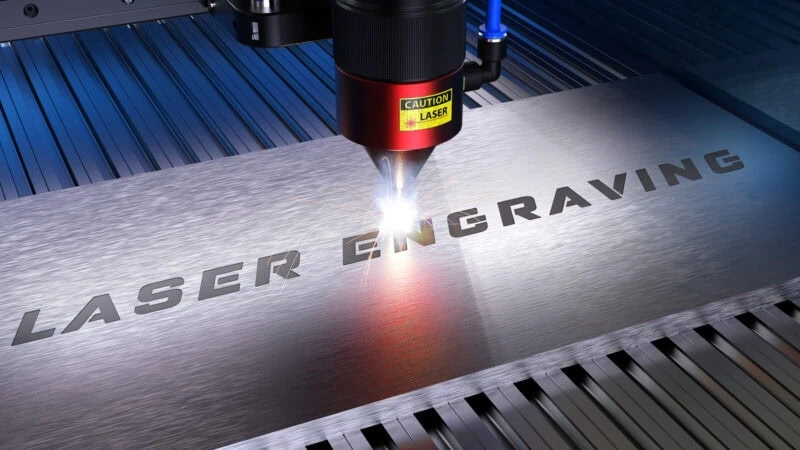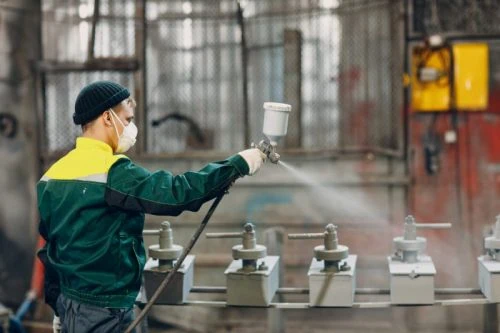Companies in all industries that manufacture the products we use on a daily basis can benefit from laser cutting services. Efficient, cost-effective, and precise laser cutting can help your manufacturing operations run at their most productive best, provided that you start with a reputable laser cutting services provider that can guide the way.
Are you looking to learn more about how laser cutting can help improve your manufacturing operations from the ground up? Then read on to discover the answers to some of the most frequently asked questions regarding laser cutting services. Steelway Laser Cutting can power your manufacturing projects now and well into the future.
What is Laser Cutting?
Laser cutting is an advanced cutting process for sheet metal and other materials that was first introduced in the 1960s. However, this has now become mainstream for multiple manufacturing industries. Laser cutting allows manufacturers to create perfectly cut parts and products. Moreover, it is the preferred method when it comes to precise results across all industries.
Common industries that use laser cutting in their manufacturing include the automobile industry, construction, electronics, medical supply industry, and much more. Simply put, laser cutting replaces traditional cutting methods by saving time and costs on excess waste and production and increases efficiency.
How Does Laser Cutting Work?
The laser cutting process begins with CAD (computer-aided design) software that creates the specifications for the cuts, bends, or engravings required. (At Steelway, we use a DXF file to create the highly specialized requirements for each cutting project.) A Computer Numeric Control laser cutter, also known as a CNC laser cutting machine, then uses this software-generated guidance to direct and focus a laser beam into the workpiece. The laser beam cuts the metal based on the specifications through burning, melting, or vaporizing, resulting in a perfectly constructed metal part or product without excess material or waste.
What Are the Advantages of Laser Cutting?
Laser cutting has a wide range of benefits as opposed to older or more traditional cutting methods. One of the top advantages is precision. Laser cutting machines can create the most detailed and minute cuts to varying metals of all thickness – from aluminum to bronze or copper – resulting in a better outcome for a product or part.
Another major advantage is efficiency. Since the laser beam does all the work, with little human involvement, it’s easy to repeat the process time and again without error for projects of 1,000 units or more. Because these machines operate 24/7, laser cutting also saves time and can be a cost-saving method due to the inherent speed, efficiency, and waste reduction throughout the process.
What Materials Can Be Laser Cut?
Virtually all metals can be cut when a laser cutting services provider starts with the best laser cutting machines available. This list includes, but is not limited to, aluminum, brass, copper, stainless steel, mild steel, steel with oxidized surfaces, and much more.
In addition, laser cutting can also be used for other non-metal materials, like wood, acrylic, and even glass. Your laser cutting services provider will be able to provide more insight into what projects can be accommodated, from cutting to welding or bending.
What is Sheet Metal Laser Cutting?
Sheet metal laser cutting is a common process in manufacturing industries across all sectors. In this process, the laser cutting machine uses CAD software to cut, form, bend, and/or combine sheets of metal into a stand-alone product or part. The sheet metal laser cutting process can be used with various metals, like stainless steel, mild steel, aluminum, copper, brass, etc. Additionally, extra finishes can be applied at the end of the process, like adding a powder coating or other wear-resistant layer that inherently strengthens the part or product.
What Software is Used for Laser Cutting?
A wide variety of software and technological tools are used to create designs for laser cutting machines, including CorelDRAW software, AutoCAD software, GRBL firmware, and other programs that create the initial and detailed instructions. At Steelway, our laser cutting machines start with a “Cut Ready” DXF file, which also allows us to give an accurate quote for new projects of all varieties.
Note that companies and businesses do not necessarily need to have this software on hand to commission a laser cutting project. The best laser cutting service providers work with their clients – even starting with a hand-drawn sketch – to create the end design that perfectly matches expectations and design requirements.
What File Format is Used for Laser Cutting?
At Steelway, our exceptional TruLaser series 1000 laser cutting machines use a “Cut Ready” DXF file to guide the laser beam for each unique project. Companies can provide this file to us at the initial consultation for an accurate project quote, or we can work with clients to create this file based on other types of designs – even a hand-drawn sketch or prototype design. Regardless of how the design process begins, the final design needs to be highly detailed, with dimensions for every aspect of the part, in order to provide the most precise results possible.
What is Laser Cutting and Laser Engraving?
Laser cutting and laser engraving are two processes that are inherently similar. In laser cutting, the laser beam melts or vaporizes the material away from a workpiece or metal sheet in order to produce cuts, edges, etc. The laser beam performs a similar function in laser engraving but uses this melting process to create etches or engravings as directed. Laser cutting is typically used for manufacturing individuals or products. In contrast, laser engraving may come into play to create designs like logos, barcodes, or special instructions on appliances, construction materials, and other metal products.
What is the Difference Between Plasma Cutting and Laser Cutting?
Plasma cutting and laser cutting both use CNC (Computer Numerical Control) machining processes to cut materials, and they are both thermal processes that are used in a wide range of industrial settings. The primary difference between the two technologies and processes is the source of the power. Laser cutting machines use a narrow and intense beam of light to vaporize and effectively cut materials. On the other hand, plasma cutting machines use a directed flow of plasma in order to cut workpieces.
Laser cutting machines can handle a larger variety of materials, and the laser cutting process tends to be faster, more accurate, and better at producing intricate cuts. While plasma cutting machines can be less costly, laser cutting machines generally provide better and faster results.
What is Laser Cutting CO2?
In a CO2 laser cutting machine, the light or laser beam that vaporizes the material produces electricity and runs through a gas-filled tube with mirrors on both ends. CO2 laser cutting technology has been around since the 1970s, and it is highly accurate and offers a lot of flexibility when it comes to cutting and shaping a piece of sheet metal or other material. The best CO2 laser cutting machines can cut through a variety of thin metal sheets and similar materials, but traditionally, CO2 laser cutting machines are used for engraving and wood products.
What is CNC Laser Cutting?
The CNC in “CNC laser cutting” refers to Computer Numerical Control, which is the guiding hand that dictates the laser cutting process. Therefore, once the computer-aided design has been fed to the laser cutting machine, the laser cutting machine uses the computer controller or control box to guide the laser onto each surface, metal sheet, or working material. This means that once the instructions and detailed designs have been finalized, there is very little – if any – human involvement in completing projects of thousands of units at once. Instead, the background computer control takes the reins, creating perfectly cut parts or products every time.
What is Powder Coating?
Powder coating is a finishing process that makes products or parts more durable and/or decorative. Effectively, powder coating entails a finishing process where dry, free-flowing, thermoplastic, or thermoset powder coat material is evenly applied to a metal or other material surface. This dry coating is then melts and hardenes into an even application, and the coating is suitable for a wide array of raw materials, including metals, plastics, glass, and even medium-density fiberboard.
Powder coating is widely used in products across all industries because it is durable. It can expand the lifespan of different parts or products more than other types of coatings (like paint) and add an extra design element, as it comes in a wide array of different colors (like in popular Tumbler cups.)
What is Laser Engraving?
Laser engraving is a technique similar to laser cutting but with a few key differences. Instead of vaporizing and completely removing elements of a piece of sheet metal or other material, laser engraving uses the laser beam to create etchings or indentations in order to create intricate designs. Laser engraving is a popular method for applying essential information onto a product or part, like a barcode, a company’s logo, and instructions on an appliance or automobile part. However, you can use it for more decorative projects, like furnishings, fixtures, and other items inside or outside the home.
How Do Powder Coating and Laser Engraving Work with a Laser Cutting Machine?
The best laser cutting service providers can guide all manufacturing processes, from laser cutting to laser engraving to the final powder coating application. Essentially, many top quality CNC laser cutting machines can assist with all of these intricate steps in manufacturing a part or product, as the same laser that creates intricate cuts to tackle engraving designs.
The powder coating process is applied after a part has been cut and created and works best with laser-cut materials, as laser cutting provides a smooth surface with no variations. Simply put, the best way to learn more about everything an exceptional laser cutting services provider can do is to start with a consultation and a conversation. Let’s discuss more about your projects and we can provide insight into the mechanics of different laser cutting services.
How Can I Learn More About Laser Cutting?
The best way to learn more about laser cutting services is to reach out to the experts at Steelway Laser Cutting. With just a conversation and a few details, we can provide you with an accurate quote, a timetable for your project, and all the information you require to make your manufacturing processes easier.
Discover a new level of precision and efficiency that will revolutionize your business.

